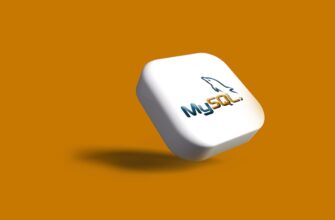# How to Encrypt Account Offline: Ultimate Security Guide for 2023
In an era of relentless cyber threats, offline account encryption is your digital fortress. While cloud-based security gets attention, protecting sensitive data without internet dependency shields you from remote hacking, server breaches, and surveillance. This guide reveals practical methods to encrypt account credentials, financial details, and personal files offline—putting you in absolute control of your privacy.
## What Is Offline Account Encryption?
Offline account encryption involves securing sensitive data using cryptographic techniques without requiring an internet connection. Unlike online services (like password managers with cloud sync), all encryption/decryption happens locally on your device. Your master keys never leave your hardware, creating an “air-gapped” layer of protection against remote attacks. This method is ideal for securing:
– Password vaults
– Financial documents
– Identity verification files
– Private communications archives
## Why Offline Encryption Beats Online Alternatives
1. **Zero Cloud Risk**: Eliminates exposure to server breaches or third-party data leaks.
2. **No Internet Dependency**: Access encrypted data anywhere, even without connectivity.
3. **Government/ISP Proof**: Prevents mass surveillance or ISP tracking.
4. **Compliance Ready**: Meets strict regulations (e.g., HIPAA, GDPR) for sensitive data handling.
5. **Full Ownership**: You control keys—no corporate backdoors or forced updates.
## Step-by-Step: How to Encrypt Accounts Offline
### Step 1: Choose Your Encryption Tool
Select trusted offline-compatible software:
– **VeraCrypt** (Windows/macOS/Linux): Creates encrypted virtual drives.
– **KeePassXC** (Cross-platform): Offline password manager with local database encryption.
– **GnuPG** (Command-line): For encrypting individual files via OpenPGP.
### Step 2: Prepare Your Data
– Compile accounts (logins, banking details) into a single file (e.g., CSV, TXT).
– Remove any obsolete or duplicate entries.
– Store sensitive files (scanned IDs, tax docs) in a dedicated folder.
### Step 3: Encrypt Using VeraCrypt
1. Install VeraCrypt and launch it.
2. Click **Create Volume** > **Encrypt a non-system partition/drive**.
3. Select **Standard VeraCrypt volume** and choose a save location (e.g., USB drive).
4. Set encryption to **AES-Twofish-Serpent** (recommended) and hash to **SHA-512**.
5. Define a volume size (minimum 10MB for text files).
6. Create a **strong password** (20+ characters, mixed case, symbols, numbers).
7. Format the volume—your encrypted container is ready.
### Step 4: Securely Store Keys & Backups
– **Never save passwords digitally**: Write recovery keys/phrases on paper.
– Use **two physical copies**: Store in a fireproof safe and a separate secure location.
– **Test decryption** before deleting originals.
## Best Practices for Maximum Security
– **Update Software Monthly**: Patch vulnerabilities in encryption tools.
– **Use Hardware Keys**: Pair passwords with YubiKey for two-factor authentication (2FA).
– **Regular Audits**: Re-encrypt data annually with new passwords.
– **Avoid Shared Devices**: Only encrypt/decrypt on trusted personal machines.
– **Wipe Old Media**: Use tools like DBAN to erase retired USB drives.
## Top 3 Offline Encryption Tools Compared
| Tool | Best For | Encryption Standard | Cross-Platform |
|—————|——————-|———————|—————-|
| **VeraCrypt** | File containers | AES-256 | Yes |
| **KeePassXC** | Password vaults | ChaCha20 | Yes |
| **AESCrypt** | Single files | AES-256 | Yes |
## Offline Encryption FAQ
### Q1: Can offline encryption protect against malware?
A: Yes—if malware isn’t active during decryption. Always scan devices with updated antivirus before accessing encrypted files.
### Q2: What if I forget my encryption password?
A: Data is irrecoverable. This is intentional for security. Use mnemonic techniques or physical password safes for backup.
### Q3: Is offline encryption legal worldwide?
A: Mostly yes, but check local laws (e.g., Belarus restricts encryption). Avoid storing illegal content regardless.
### Q4: How often should I change encrypted passwords?
A: Rotate master passwords every 6 months and account passwords annually. Use KeePassXC’s built-in password generator.
### Q5: Can smartphones handle offline encryption?
A: Absolutely! Use **Cryptomator** (iOS/Android) for file encryption or **Keepass2Android** for password vaults—always disable cloud sync.
## Final Thoughts
Offline encryption transforms your devices into impenetrable data vaults. By mastering tools like VeraCrypt and KeePassXC, you eliminate dependency on vulnerable online systems. Remember: true security starts when you take control. Implement these steps today to lock down your accounts—no internet required.








